spain

 During World War II, Hitler was terrorizing people, especially the Jews, Gypsies, and even Blacks. Hitler wanted to create an Aryan race dominate society, and truly preferred that anyone who did not fit that “mold” be removed from the Earth. The Aryan race consisted of tall, blonde-haired blue-eyed people, which is odd, considering the fact that Hitler was short (5’9″), and had brown hair. He did have blue eyes, but that was about the only part of him that fit the “mold” of the Aryan race. Nevertheless, he terrorized many people and for that reason, many people tried to escape the occupied areas of Europe, like France to the free areas like Spain.
During World War II, Hitler was terrorizing people, especially the Jews, Gypsies, and even Blacks. Hitler wanted to create an Aryan race dominate society, and truly preferred that anyone who did not fit that “mold” be removed from the Earth. The Aryan race consisted of tall, blonde-haired blue-eyed people, which is odd, considering the fact that Hitler was short (5’9″), and had brown hair. He did have blue eyes, but that was about the only part of him that fit the “mold” of the Aryan race. Nevertheless, he terrorized many people and for that reason, many people tried to escape the occupied areas of Europe, like France to the free areas like Spain.
One of the routes was to go across the ridge of the Pyrenees Mountain range, in order to cross the border into 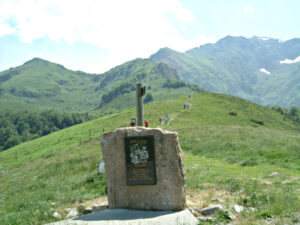 the “promised land,” the neutral territory of Spain, to find a way of escape, a second chance, a future. It was a perilous route to go through the Pyrenees mountains, but it provided a means for hundreds of thousands of resistance fighters, civilians, Jews, allied soldiers and escaped prisoners of war to evade Nazi pursuers. Failure was not an option, because behind them was Nazi-occupied France, bringing certain imprisonment or death. Many of the travelers had come quite a distance, helped by resistance fighters and citizens who disagreed with all that was going on with the Nazi regime. The perilous journey up through rocky boulder fields and frozen glaciers was the final stretch in a long and dangerous trek across wartime Europe, hiding from German military, Gestapo secret police and SS paramilitary forces.
the “promised land,” the neutral territory of Spain, to find a way of escape, a second chance, a future. It was a perilous route to go through the Pyrenees mountains, but it provided a means for hundreds of thousands of resistance fighters, civilians, Jews, allied soldiers and escaped prisoners of war to evade Nazi pursuers. Failure was not an option, because behind them was Nazi-occupied France, bringing certain imprisonment or death. Many of the travelers had come quite a distance, helped by resistance fighters and citizens who disagreed with all that was going on with the Nazi regime. The perilous journey up through rocky boulder fields and frozen glaciers was the final stretch in a long and dangerous trek across wartime Europe, hiding from German military, Gestapo secret police and SS paramilitary forces.
The Freedom Trail, whose final ascent has a zig-zag path through an ice sheet, is an annual “walking memorial” 
 these days. People, some of them descendants of the original people who walked the trail in a desperate run for their lives, walk to remember those who went before them to freedom, those who could not make the journey and lost their lives, and those who lost their lives on the trail itself. The area really is quite beautiful, but I’m sure it didn’t feel that way to those who were running for their lives.
these days. People, some of them descendants of the original people who walked the trail in a desperate run for their lives, walk to remember those who went before them to freedom, those who could not make the journey and lost their lives, and those who lost their lives on the trail itself. The area really is quite beautiful, but I’m sure it didn’t feel that way to those who were running for their lives.
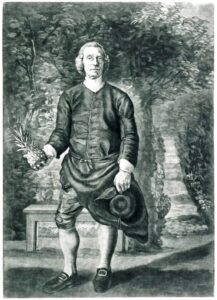 In what is one of the funniest displays of “wealth” the pineapple was once carried around as proof that the one carrying it was a first-class citizen. Now, I can’t say that I think the tradition made any sense, but in 18th century England, pineapples really were a status symbol. Their very cost set the apart as something only owned by the very rich. Like many of the upper-class citizens of that era, they liked to flaunt their wealth to those less fortunate. So, those rich enough to own a pineapple would carry them around to signify their personal wealth and high-class status. They also adorned everything from clothing to houseware with the tropical fruit.
In what is one of the funniest displays of “wealth” the pineapple was once carried around as proof that the one carrying it was a first-class citizen. Now, I can’t say that I think the tradition made any sense, but in 18th century England, pineapples really were a status symbol. Their very cost set the apart as something only owned by the very rich. Like many of the upper-class citizens of that era, they liked to flaunt their wealth to those less fortunate. So, those rich enough to own a pineapple would carry them around to signify their personal wealth and high-class status. They also adorned everything from clothing to houseware with the tropical fruit.
Pineapples were first imported from South America to Europe by Spanish explorers starting in the 16th century. Though native to South America, pineapples made their  way to the Caribbean Island of Guadeloupe. It was in Guadeloupe that Christopher Columbus first spotted their spiky crowns in 1493. He and his crew took the pineapples back to Spain, where everyone loved how sweet this new, exotic fruit tasted. Unfortunately, because they were a tropical fruit, the pineapples wouldn’t grow in Spain. The only pineapples they could get their hands on had to be imported from across the Atlantic. It was time consuming and expensive undertaking, and often resulted in rotten fruit. From Spain, they then came to England. It was in England that the pineapple became the most prestigious fruit of the 18th century. European sailors brought it home as a sign of successful expedition and evidence of their prosperity. It also became a decorative piece on upper-class dining tables. When a pineapple was seen decorating the dining table of a home, you knew that the family had traveled places and
way to the Caribbean Island of Guadeloupe. It was in Guadeloupe that Christopher Columbus first spotted their spiky crowns in 1493. He and his crew took the pineapples back to Spain, where everyone loved how sweet this new, exotic fruit tasted. Unfortunately, because they were a tropical fruit, the pineapples wouldn’t grow in Spain. The only pineapples they could get their hands on had to be imported from across the Atlantic. It was time consuming and expensive undertaking, and often resulted in rotten fruit. From Spain, they then came to England. It was in England that the pineapple became the most prestigious fruit of the 18th century. European sailors brought it home as a sign of successful expedition and evidence of their prosperity. It also became a decorative piece on upper-class dining tables. When a pineapple was seen decorating the dining table of a home, you knew that the family had traveled places and  were either explorers or merchants with money, to afford the exotic fruit.
were either explorers or merchants with money, to afford the exotic fruit.
Because of its new-found fame, the pineapple grew to be very expensive. In the American colonies in the 1700s, pineapples were no less special. They were imported from the Caribbean Islands, and the pineapples that arrived in America were very expensive. In fact, one pineapple could cost as much as $8000…in today’s dollars. While they may have been a symbol of wealth, if you ask me, carrying one around would not be a wise way to show that wealth. It wouldn’t take long for that coveted fruit to go bad, and they all you had was the memory of the money spent and thrown away.

 My grand nephew, James Renville got the “travel bug” early on in his life. The first trip he took was when he was just when he was just 3 weeks old. His parents, my niece Toni Chase and her then husband, Jim Renville to their newborn son to meet his grandpa in North Dakota. Many babies don’t do well on long trips, but James was calm throughout the seven hour drive. He was such a good baby for them. The only times he fussed was when he was hungry, and then it wasn’t much fussing. Really, from that point on, James was at his most calm when he was traveling. His mom says that he “knew what vacation meant from the start.”
My grand nephew, James Renville got the “travel bug” early on in his life. The first trip he took was when he was just when he was just 3 weeks old. His parents, my niece Toni Chase and her then husband, Jim Renville to their newborn son to meet his grandpa in North Dakota. Many babies don’t do well on long trips, but James was calm throughout the seven hour drive. He was such a good baby for them. The only times he fussed was when he was hungry, and then it wasn’t much fussing. Really, from that point on, James was at his most calm when he was traveling. His mom says that he “knew what vacation meant from the start.”
Toni read somewhere, and many of us have always thought the same thing, that when you are an “only child,” like James is, that “you are likely to mature early and manifest adult behaviors an attitudes.” I’m sure it is because they around adults so much. That was never made more clear to her than when they went on the first trip that James was old enough to really know what was going on. They took James to the water park in South Dakota. He really had a blast, but he refused to go on any of the “kiddie slides” or “baby slides,” as he called them. While that was great for James, it meant that since James really was a “kiddie” or “baby” himself, he also couldn’t go on the big slides without an adult. So, his mom and dad had to go up and down the steep hills, carrying James most of the way, in the 90° heat to get to the slides. The plan had been to let the kids…James and his cousins…play for a while, and then head home in the afternoon. Well, when everyone else was ready to go…the cousins had already fallen asleep, James definitely was not. He wasn’t one bit tired, or as his mom puts it, “Not even a yawn!” They ended up staying until the park closed.
Last August, James took a trip with some friends of his. It was a chance to say goodbye to summer, and to one friend who was leaving to start his career in the Air Force. For James, it was also a way to “say goodbye” to 
 being a kid. College was over, and everything was going to be different now. The friends went to Denver to cut loose a little bit. They went to Eliches, went clubbing, and checked out some of the breweries. Toni began to think of what was coming next. She wanted things to be good for James, and he did love to travel. He had taken tips to the Netherlands and Spain, and she wanted to do something fun for him.
being a kid. College was over, and everything was going to be different now. The friends went to Denver to cut loose a little bit. They went to Eliches, went clubbing, and checked out some of the breweries. Toni began to think of what was coming next. She wanted things to be good for James, and he did love to travel. He had taken tips to the Netherlands and Spain, and she wanted to do something fun for him.
Toni and her husband, Dave Chase began to plan their own travels and some trips for James too. Things started off really well. Toni and Dave took him to a concert at Red Rocks in Denver. It was to be the first of several fun trips the family would take, including a trip to San Diego with Toni and Dave. The San Diego trip was amazing too. They spent 5 days there. They planned activities for every day. They went to an air show that Toni is sure James only went to “for her.” Then afterward, James said it wasn’t what he had expected. He said he had a great time. Then they went to a festival in La Jolla, several beaches on the ocean, the Cabrillo National Monument and the surrounding area, and the brewery district in the San Diego area…then relaxed at the resort.
After these trips, the Covid-19 Pandemic hit, and the whole world went into turmoil. For James that meant no trip to Las Vegas with his dad, Jim and the rest of their pool team for his first pool tournament, and trip that was to be the “Shangri La” of them all, James’ long awaited trip to the western coast of South America. He had planned to take that one last year, but couldn’t get the time off from his job. Now, it is all on hold, until the trips can be rearranged, and who knows how long that will be. Still, James really was born with the “traveling bug” and he has been building his skills for years. He is very driven and never wants to miss a thing. His past trips have included the Rocky Mountain Region (Wyoming, Montana, Utah, South Dakota, North Dakota, and 
 Colorado), the deserts of Nevada, the lakes of Arizona, the beaches of Florida, the ocean surrounding California, the eastern shores of Virginia and Washington DC, the costal plains of Alabama, the French Quarter of New Orleans nd Louisiana, the Ozark Mountains of Arkansas, and far beyond the northern hemisphere to see parts of the Netherlands and Spain. While some of his trips were cancelled or postponed this year, there is always next year. For James…well, next up is Peru, and it will be amazing!! Today is James’ birthday. Happy birthday James!! Have a great day!! We love you!!
Colorado), the deserts of Nevada, the lakes of Arizona, the beaches of Florida, the ocean surrounding California, the eastern shores of Virginia and Washington DC, the costal plains of Alabama, the French Quarter of New Orleans nd Louisiana, the Ozark Mountains of Arkansas, and far beyond the northern hemisphere to see parts of the Netherlands and Spain. While some of his trips were cancelled or postponed this year, there is always next year. For James…well, next up is Peru, and it will be amazing!! Today is James’ birthday. Happy birthday James!! Have a great day!! We love you!!

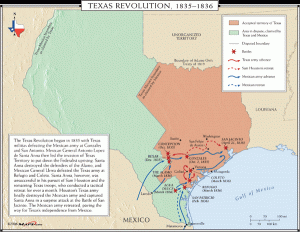 Since the 17th century, Texas, or Tejas as the Mexicans called it, had technically been a part of the Spanish empire. However, there were only about 3,000 Spanish-Mexican settlers in Texas, even as late as the 1820s, and Mexico City’s hold on the territory was very weak. Tensions were growing between Mexico and Texas, and on October 2, 1835, the area erupted into violence when Mexican soldiers attempted to disarm the people of Gonzales. People just don’t take kindly to having their guns taken away in any era, I guess. The citizens of Texas chose a war for independence of allowing the government to take their guns.
Since the 17th century, Texas, or Tejas as the Mexicans called it, had technically been a part of the Spanish empire. However, there were only about 3,000 Spanish-Mexican settlers in Texas, even as late as the 1820s, and Mexico City’s hold on the territory was very weak. Tensions were growing between Mexico and Texas, and on October 2, 1835, the area erupted into violence when Mexican soldiers attempted to disarm the people of Gonzales. People just don’t take kindly to having their guns taken away in any era, I guess. The citizens of Texas chose a war for independence of allowing the government to take their guns.
Mexico had just won it’s own independence from Spain in 1821. At this point, Mexico welcomed large numbers of Anglo-American immigrants into Texas. They were hoping that these citizens would become loyal Mexican citizens, thereby keeping the territory from falling into the hands of the United States. During the next decade men like Stephen Austin brought more than 25,000 people to Texas, most of them Americans. But while these emigrants legally became Mexican citizens, they continued to speak English, formed their own schools, and had closer trading ties to the United States than to Mexico.
The situation exacerbated in 1835, the president of Mexico, Antonio Lopez de Santa Anna, overthrew the constitution and appointed himself dictator. Recognizing that the “American” Texans were likely to use his rise to power as an excuse to secede, Santa Anna ordered the Mexican military to begin disarming the Texans whenever possible. He underestimated the people. His attempt to disarm proved more difficult than he could have ever imagined, and the situation exploded on that October day in 1835.
That day, the Mexican soldiers were attempting to take a small cannon from the village of Gonzales. To their surprise, they encountered much stiffer resistance than they ever thought possible from a hastily assembled militia of Texans. After a rather brief fight, the Mexicans retreated and the Texans kept their cannon. The determined Texans would continue to battle Santa Ana and his army for another year and a half before winning their independence and establishing the Republic of Texas. This truly goes to show that a nation, whose citizens are armed, is much more likely to be able to fend off their enemies…even if that enemy is a tyrannous government; than an nation of disarmed citizens. Yes, the ensuing war lasted for another year and a half, but 
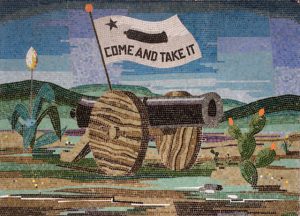 the people won their independence in the end. They later went on to become a part of the United States, and they continue to carry their guns to this day. The people of Texas are just as adamant about their right to bear arms today as they were in 1835, as are a good number of their fellow Americans. It’s a fight that would not likely be won by the government today either. The American people won’t accept the loss of guns without a fight of epic proportions!!
the people won their independence in the end. They later went on to become a part of the United States, and they continue to carry their guns to this day. The people of Texas are just as adamant about their right to bear arms today as they were in 1835, as are a good number of their fellow Americans. It’s a fight that would not likely be won by the government today either. The American people won’t accept the loss of guns without a fight of epic proportions!!

 Every New Year’s Eve for as long as I can remember, our family threw a party, both for the New Year and for my mom’s birthday, which is January 1. It is our New Year’s Eve Tradition. As I was thinking about our tradition, I wondered about other New Year’s Eve Traditions. So, I decided to research some of them. Wow!! There are some really strange traditions out there. One I found particularly strange was that in Switzerland, they drop a dollop of ice cream on the floor. It is supposed to bring overflowing abundance in the New Year. Now, I don’t know about you, but I think that is strange…and messy. In Spain, it is all about good timing. When the clock strikes midnight, Spaniards try to eat a grape in time with each chime. Those who don’t manage to cram the right number of grapes at the right time face the threat of bad luck for the following year. Be warned, it’s not as easy as it sounds, apparently. Many people practice beforehand to increase their chances of beating the clock. This is serious business from what I read. In Czechoslovakia, they like to look to their future around New Year’s, usually with the help of an apple. The fruit is cut in half and the shape of the core determines the person’s fate. If it’s a cross, mischief is on the way, but if it’s a star, you can expect happiness. Apparently, many New Year’s Eve traditions center around food…including our party, but our party doesn’t have any traditions that involve the food.
Every New Year’s Eve for as long as I can remember, our family threw a party, both for the New Year and for my mom’s birthday, which is January 1. It is our New Year’s Eve Tradition. As I was thinking about our tradition, I wondered about other New Year’s Eve Traditions. So, I decided to research some of them. Wow!! There are some really strange traditions out there. One I found particularly strange was that in Switzerland, they drop a dollop of ice cream on the floor. It is supposed to bring overflowing abundance in the New Year. Now, I don’t know about you, but I think that is strange…and messy. In Spain, it is all about good timing. When the clock strikes midnight, Spaniards try to eat a grape in time with each chime. Those who don’t manage to cram the right number of grapes at the right time face the threat of bad luck for the following year. Be warned, it’s not as easy as it sounds, apparently. Many people practice beforehand to increase their chances of beating the clock. This is serious business from what I read. In Czechoslovakia, they like to look to their future around New Year’s, usually with the help of an apple. The fruit is cut in half and the shape of the core determines the person’s fate. If it’s a cross, mischief is on the way, but if it’s a star, you can expect happiness. Apparently, many New Year’s Eve traditions center around food…including our party, but our party doesn’t have any traditions that involve the food.
Several of the traditions sounded very familiar to me, because they are traditions I have grown up with. Many places celebrate with fireworks on New Year’s Eve. In some places, it is believed that the noise and light from fireworks and sparklers would scare away bad spirits, not something I believe in, but some people might. At our house, midnight means that it’s time to “beat the pans.” It’s something we have done since I was a little girl, and a tradition that my sisters and I would not change. It reminds us of our parents, and makes it seem like they are there with us on that special night each year. I do think that my parents might be surprised to find out that their tradition, that they made up, is one that is also tradition in Iran…I was very surprised.
A couple of traditions were, strange to me. People in Buenos Aires, Argentina, have an unusual tradition. On the last day of the year they shred old documents and papers to symbolize leaving the past behind. Around noon, on New Year’s Day, people throw the scraps of paper from their windows all over the city in a shower of confetti. Out with the old and in with the new, I guess. I hope they never need those documents. As strange as that tradition was, the winner of the strangest tradition on Earth…in my mind at least it the one celebrated in Peru. The last day of December…New Year’s Eve, is the day of the Takanakuy Festival. The Takanakuy Festival is the craziest festival I have ever heard of. The Takanakuy Festival, is the fighting festival. Every year people 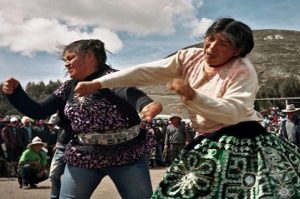
 of Peru have a fist fight to settle their differences. Can you imagine a whole town fighting in the street? They then start the year off on a clean slate on New Year’s Day. I guess then that it must be illegal (or at least, in very bad taste) to be mad about anything or at anyone that you had a fist fight with the day before. Now, I think that the tradition of not carrying any arguments into the new year is a really good one, but I know that I would not want to have to go through that whole fist fight part of the festival. Nope…I sure wouldn’t.
of Peru have a fist fight to settle their differences. Can you imagine a whole town fighting in the street? They then start the year off on a clean slate on New Year’s Day. I guess then that it must be illegal (or at least, in very bad taste) to be mad about anything or at anyone that you had a fist fight with the day before. Now, I think that the tradition of not carrying any arguments into the new year is a really good one, but I know that I would not want to have to go through that whole fist fight part of the festival. Nope…I sure wouldn’t.
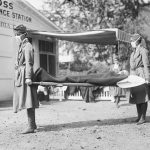
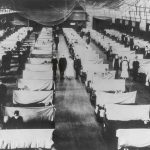 Not everyone agrees with getting the flu shot, and I get that. Still, even though there have been issues with the flu shot, it has also been something, along with medicines that has helped to prevent breakouts like the flu pandemic that hit Philadelphia on this day, September 28, 1918. It is believed that a Liberty Loan parade prompted the outbreak in Philadelphia, and before the outbreak was over, an estimated 30 million people worldwide were dead. As most of us know, influenza is a virus that attacks the respiratory system, is highly contagious, and mutates very quickly to avoid being killed by the human immune system. A prior pandemic of the flu in 1889 killed thousands all over the world, but it was nothing like the 1918 Flu Pandemic in its deadliness.
Not everyone agrees with getting the flu shot, and I get that. Still, even though there have been issues with the flu shot, it has also been something, along with medicines that has helped to prevent breakouts like the flu pandemic that hit Philadelphia on this day, September 28, 1918. It is believed that a Liberty Loan parade prompted the outbreak in Philadelphia, and before the outbreak was over, an estimated 30 million people worldwide were dead. As most of us know, influenza is a virus that attacks the respiratory system, is highly contagious, and mutates very quickly to avoid being killed by the human immune system. A prior pandemic of the flu in 1889 killed thousands all over the world, but it was nothing like the 1918 Flu Pandemic in its deadliness.
It is thought that the 1918 flu pandemic originated with a bird or farm animal in the American Midwest early that year. It may have traveled among birds, pigs, sheep, moose, bison, and elk, eventually mutating to the version that took hold in the human population that year. Like most outbreaks, this one started slowly, but as people moved from place to place, and others came in to help, it began to spread like wildfire. Once it spread to Europe later in the year, through some of the 200,000 American troops shipped out to fight in World War I, it was out of control. It affected every area of life, and people wore masks to avoid contact with the virus.
By June 1918, it had largely disappeared in North America, but only after taking a considerable toll on the people. Over the summer of 1918, it spread quickly over Europe. It’s first stop seems to have been in Spain, and it took so many lives there, that it was named the Spanish Flu. This flu was highly unusual, because it seemed to affect strong people in the prime of their lives rather than babies and the elderly. By the end of the summer, about 10,000 people were dead. In most cases, hemorrhages in the nose and lungs killed victims within three days. By fall, it was completely out of control. By the time it reached London and Boston in 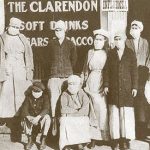
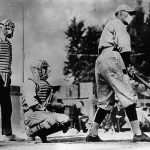 September, it was a far worse strain that it had been before. Twelve thousand soldiers came down with the flu in Massachusetts in mid-September. Philadelphia was the hardest hit city in the United States with a loss of nearly 12,000. The whole city was quarantined. In the United States, five out of every thousand people fell victim to the flu. Other countries were far worse, some as much as ten, fifteen or even thirty five per thousand, with 20 million people dying in India alone. In the end, more people died from the influenza pandemic, than from all of the battles of World War I combined.
September, it was a far worse strain that it had been before. Twelve thousand soldiers came down with the flu in Massachusetts in mid-September. Philadelphia was the hardest hit city in the United States with a loss of nearly 12,000. The whole city was quarantined. In the United States, five out of every thousand people fell victim to the flu. Other countries were far worse, some as much as ten, fifteen or even thirty five per thousand, with 20 million people dying in India alone. In the end, more people died from the influenza pandemic, than from all of the battles of World War I combined.

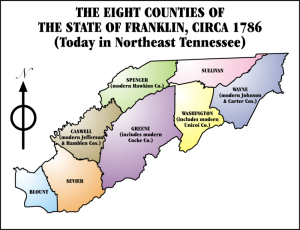 Have you heard of the nation of Frankland…or maybe the nation of Franklin? I hadn’t either, but it was a real place. Early in the history of the United States, its people operated on somewhat limited trust of the government…probably due to the treatment they received in England. In April of 1784, the state of North Carolina ceded its western land claims between the Allegheny Mountains and the Mississippi River to the United States Congress. The settlers who lived in that area, known as the Cumberland River Valley, had already formed their own government from 1772 to 1777, and their distrust of Congress led the to worry that the area might be sold to Spain or France to pay off war debts owed them by the government. Due to their concerns, North Carolina retracted its cession and started to organize an administration for the territory.
Have you heard of the nation of Frankland…or maybe the nation of Franklin? I hadn’t either, but it was a real place. Early in the history of the United States, its people operated on somewhat limited trust of the government…probably due to the treatment they received in England. In April of 1784, the state of North Carolina ceded its western land claims between the Allegheny Mountains and the Mississippi River to the United States Congress. The settlers who lived in that area, known as the Cumberland River Valley, had already formed their own government from 1772 to 1777, and their distrust of Congress led the to worry that the area might be sold to Spain or France to pay off war debts owed them by the government. Due to their concerns, North Carolina retracted its cession and started to organize an administration for the territory.
At the same time, representatives from Washington, Sullivan, Spencer (modern-day Hawkins) and Greene  counties declared their independence from North Carolina. Then, in May, they petitioned the United States Congress for statehood as Frankland. The simple majority favored the petition, but Congress could not get the two thirds majority to pass it…not even when the people decided to change the name to Franklin, in the hope of winning favor with Benjamin Franklin and some of the others.
counties declared their independence from North Carolina. Then, in May, they petitioned the United States Congress for statehood as Frankland. The simple majority favored the petition, but Congress could not get the two thirds majority to pass it…not even when the people decided to change the name to Franklin, in the hope of winning favor with Benjamin Franklin and some of the others.
When the petition failed to pass, the people in the area grew angry, and decided to defy Congress. On this day, August 23, 1784, they ceded from the union and functioned as the Free Republic of Franklin (Frankland) for four years. During that time, they had their own constitution, Indian treaties and legislated system of barter in lieu of currency. Two years into the Free Republic of Franklin’s history, North Carolina set up their own parallel government in the area. The economy was weak, and never really gained ground, so the governor, John Sevier approached the Spanish for aid. That move brought a feeling of terror in the government of North Carolina, and they arrested Sevier. The situation worsened when the Cherokee, Chickamauga and Chickasaw began to attack settlements within Franklin’s borders in 1788. Franklin quickly rejoined North Carolina to gain its militia’s protection from attack.
It was a short life for the little nation of Franklin, and eventually they wouldn’t even belong to North Carolina, but rather became a part of the state of Tennessee. It just goes to show that the growing pains of a nation can  take on many forms to reach their destiny as a whole nation. Some changes are good ones, and continue on into the future, and others are not so good, and are sometimes absorbed into the fabric of history and time, and end up looking nothing like the change they started out to be.
take on many forms to reach their destiny as a whole nation. Some changes are good ones, and continue on into the future, and others are not so good, and are sometimes absorbed into the fabric of history and time, and end up looking nothing like the change they started out to be.
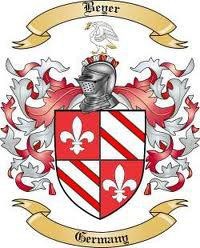 In the middle of the 18th century, Germany was a country that had been floundering due to European politics for more than a hundred years. At that time, France, England, and Spain largely had control of the continent because of their military might. The German states, on the other hand, were left to their own devices, and each leader was running his state for his own gain, without concern for the people or the nation as a whole. As a result of all the political greed, Germany was a nation that was going to quickly go under or eventually succumb to the greed around it and become an evil dictatorship, and no help was coming. It was in this Germany, at this time in history that my 6th Great Grandfather, Philipp Beyer (a name that would later be Americanized to Byer) and his wife, my 6th Great Grandmother Maria, were a young couple with a small son…my 5th Great Grandfather, Johann Beyer.
In the middle of the 18th century, Germany was a country that had been floundering due to European politics for more than a hundred years. At that time, France, England, and Spain largely had control of the continent because of their military might. The German states, on the other hand, were left to their own devices, and each leader was running his state for his own gain, without concern for the people or the nation as a whole. As a result of all the political greed, Germany was a nation that was going to quickly go under or eventually succumb to the greed around it and become an evil dictatorship, and no help was coming. It was in this Germany, at this time in history that my 6th Great Grandfather, Philipp Beyer (a name that would later be Americanized to Byer) and his wife, my 6th Great Grandmother Maria, were a young couple with a small son…my 5th Great Grandfather, Johann Beyer.
Germany was quickly becoming a place that was either going to fall apart or be controlled  by it’s own evil leaders. Either way, Germany had become a place where my 6th Great Grandparents could no longer afford to raise their family, so they made the decision to immigrate to Russia, which at that time in history was a better choice. I can’t even imagine how they must have felt, as they were leaving the country they loved, and moving to an unknown situation in an unknown country. Russia must have ended up being a good decision, because the family would live there for the next five generations, before my Great Grandfather, Cornelius George Byer, would make the decision in 1874 to immigrate to America, once again in search of a better life and to get away from a government that was quickly becoming extremely evil.
by it’s own evil leaders. Either way, Germany had become a place where my 6th Great Grandparents could no longer afford to raise their family, so they made the decision to immigrate to Russia, which at that time in history was a better choice. I can’t even imagine how they must have felt, as they were leaving the country they loved, and moving to an unknown situation in an unknown country. Russia must have ended up being a good decision, because the family would live there for the next five generations, before my Great Grandfather, Cornelius George Byer, would make the decision in 1874 to immigrate to America, once again in search of a better life and to get away from a government that was quickly becoming extremely evil.
It is a sad thing when a government becomes so evil that you feel like you must immigrate to another country in order to save your children from the tyranny of your own country. Like it or not, that is what many people had to do and still have to do in order to protect  their children. The move to America would be the best thing my great grandfather ever did. Once here, they were able to get a homestead that belonged to them, and was not subject to confiscation by an evil government, and more importantly, their children could not be taken away by the government to be raised as it saw fit, and become as evil as it was. It does make me very thankful that my grandfathers were wise enough to know when it was time to simply cut your losses, and get out…before their evil government made it impossible to leave.
their children. The move to America would be the best thing my great grandfather ever did. Once here, they were able to get a homestead that belonged to them, and was not subject to confiscation by an evil government, and more importantly, their children could not be taken away by the government to be raised as it saw fit, and become as evil as it was. It does make me very thankful that my grandfathers were wise enough to know when it was time to simply cut your losses, and get out…before their evil government made it impossible to leave.

